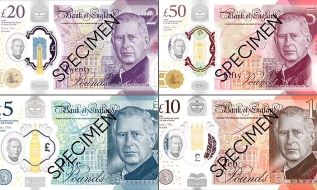Google Map Ungkap 2 Juta Hektar Hutan Indonesia Ditebang pada 2011-2012
Google Map Revealed Indonesia`s Deforestation 20,000 Million sq km in 2011-2012
Editor : Cahyani Harzi
Translator : Dhelia Gani
 b.jpg)
KERUSAKAN akibat penggundulan hutan (deforestasi), kebakaran hutan dan badai di planet kita terungkap secara detail, yang belum pernah terjadi sebelumnya.
Laju deforestasi di Indonesia dua kali lipat dalam periode penelitian tersebut, dari sekitar 3.900 mil persegi (10.000 kilometer persegi) per tahun pada 2000 hingga 2003 menjadi lebih dari 7.700 mil persegi (20.000 kilometer persegi) pada 2011-2012, seperti dilansir Mail Online.
Peta beresolusi tinggi yang dirilis oleh Google menunjukkan bagaimana hutan global yang secara kerugian hilang sekitar 1,5 juta km persegiselama 12 tahun (2000-2012).
Sebagai perbandingan, luas penggundulan tersebut setara ukuran hilangnya seluruh negara bagian Alaska.
Peta-peta tersebut, dibuat oleh tim ahli yang melibatkan NASA, Google dan penelity University of Maryland, memanfaatkan gambar-gambar dari satelit Landsat.
Setiap pixel dalam sebuah citra Landsat menunjukkan ukuran setiap daerah seukuran berlian, menyediakan data yang cukup untuk memperbesar gambar pada tiap wilayah.
Sebelumnya, perbandingan data luas hutan di setiap negara di dunia mustahil mampu seakurat ini.
"Ketika Anda menyusun dataset yang menggunakan metode dan definisi yang berbeda, sulit untuk menyusunnya," kata Matthew Hansen di University of Maryland.
Dengan Landsat, instrumen yang mengorbit di atas muka bumi mampu merekam gambar dengan kualitas yang sama di seluruh dunia, kita dapat menerapkan algoritma yang sama untuk hutan di Amazon, di Kongo, di Indonesia, dan sebagainya.
Profesor Hansen menilai 143 miliar piksel dalam 654.000 citra landsat untuk mengkompilasi peta penggundulan hutan dan hutan lestari antara tahun 2000 hingga 2012.
Selama periode itu, 888.000 mil persegi (2,3 juta kilometer persegi) hutan hilang, dan 309.000 mil persegi (800.000 kilometer persegi) berhasil ditanami kembali.
Tim peneliti menemukan tingkat deforestasi di sebagian besar negara meningkat.
Indonesia
Laju deforestasi di Indonesia dua kali lipat dalam periode penelitian tersebut, dari sekitar 3.900 mil persegi (10.000 kilometer persegi) per tahun pada 2000 hingga 2003 menjadi lebih dari 7.700 mil persegi (20.000 kilometer persegi) pada 2011-2012.
"Ini adalah pertama kalinya seseorang mampu melakukan wall-to-wall, Landsat menganalisis secara global semua hutan dunia - tempat terjadinya penggundulan hutan, di mana dilakukan penanaman kembali, dan di mana terjadinya mengalami kerusakan alam," kata Jeff Masek, ilmuwan proyek Landsat di Goddard Space Flight Center.
Peta-peta ini juga menggambarkan dampak politik pada tutupan lahan.
Misalnya, di pulau Kalimantan, peta dengan jelas menunjukkan perbatasan antara Malaysia dan Indonesia.
Penebangan hutan secara masif di Malaysia di terlihat sampai ke perbatasan Indonesia, ketika sebelumnya hutan masih utuh pada 2012.
Di Pantai Gading, perang sipil pada 2002 berkaitan erat dengan deforestasi intensif beberapa cagar alam yang sebelumnya dilindungi.
Sebuah pola yang berbeda dari perubahan muncul di Amerika Serikat bagian tenggara, di mana pemilik lahan menebang pohon untuk memasok kayu dan dengan cepat melakukan penanaman kembali."
"Tentu ini eco-region di tenggara, 30 persen dari lahan hutan tumbuh kembali atau hilang selama periode ini," kata Profesor Hansen.
"Ini sangat intensif. Pohon benar-benar diperlakukan seperti tanaman di daerah ini. "
Di Alabama, Landsat mendeteksi garis panjang terjadinya pengrusakan hutan.
Ketika para peneliti memeriksa catatan tahun-demi-tahun, mereka menemukan kerusakan terjadi pada tahun 2011 setelah terjadinya badai tornado.
Brasil menurunkan laju deforestasi dari sekitar 15.400 mil persegi (40.000 kilometer persegi) per tahun menjadi sekitar 7.700 mil persegi (20.000 kilometer persegi) per tahun.
"Itu hasil dari upaya kebijakan terpadu untuk mengurangi deforestasi, dan menetapkan standar untuk menyelamatkan dunia," kata Profesor Hansen.
Namun, pemerintah Brasil kemarin mengungkapkan bahwa deforestasi di Amazon meningkat hampir sepertiga selama tahun lalu.
Data satelit untuk 12 bulan sampai akhir Juli menunjukkan bahwa deforestasi di daerah meningkat sebesar 28% dibandingkan tahun sebelumnya.
Meskipun tersebar, total lahan yang dibuka selama periode tersebut mencapai 2.256 mil persegi (5.843 km persegi) - suatu daerah yang hampir seukuran negara bagian Delaware.
Angka tersebut, dipenuhi prediksi oleh para ilmuwan dan pemerhati lingkungan, berdasarkan angka-angka disusun sepanjang tahun, kehancuran hutan yang sedang bangkit lagi.
"Anda tidak bisa berdebat dengan angka," kata Marcio Astrini, koordinator kampanye Amazon dari Greenpeace di Brasil bab Greenpeace, dari kelompok pencinta lingkungan.
THE DESTRUCTION caused by deforestation, wildfires and storms on our planet have been revealed in unprecedented detail.
Indonesia´s deforestation rate doubled in the study period, from approximately 3,900 square miles (10,000 square kilometers) per year in 2000-2003 to more than 7,700 square miles (20,000 square kilometers) in 2011-2012.
High-resolution maps released by Google show how global forests experienced an overall loss of 1.5 million sq km during 2000-2012.
For comparison, that’s a loss of forested land equal in size to the entire state of Alaska.
The maps, created by a team involving Nasa, Google and the University of Maryland researchers, used images from the Landsat satellite.
Each pixel in a Landsat image showing an area about the size of a baseball diamond, providing enough data to zoom in on a local region.
Before this, country-to-country comparisons of forestry data were not possible at this level of accuracy.
‘When you put together datasets that employ different methods and definitions, it´s hard to synthesise,’ said Matthew Hansen at the University of Maryland.
‘With Landsat, as a polar-orbiting instrument that takes the same quality pictures everywhere, we can apply the same algorithm to forests in the Amazon, in the Congo, in Indonesia, and so on.
Professor Hansen looked at 143 billion pixels in 654,000 Landsat images to compile maps of forest loss and gain between 2000 and 2012.
During that period, 888,000 square miles (2.3 million square kilometers) of forest were lost, and 309,000 square miles (800,000 square kilometers) regrew.
The team found the deforestation rate in most countries increased.
Indonesia
Indonesia´s deforestation rate doubled in the study period, from approximately 3,900 square miles (10,000 square kilometers) per year in 2000-2003 to more than 7,700 square miles (20,000 square kilometers) in 2011-2012.
‘This is the first time somebody has been able to do a wall-to-wall, global Landsat analysis of all the world´s forests - where they´re being cleared, where they´re regrowing, and where they´re subject to natural disturbances,’ said Jeff Masek, Landsat project scientist at the Goddard Space Flight Center.
The maps also illustrate the impact of politics on land cover.
For instance, on the island of Borneo, the maps clearly show the border between Malaysia and Indonesia.
Malaysia´s heavy logging along forest roads is visible right up to the Indonesian border, where forests were still largely intact as of 2012.
In Côte d´Ivoire, a civil war in 2002 corresponded with intense deforestation of several previously protected nature reserves.
A different pattern of change appears in the southeastern U.S., where landowners harvest trees for timber and quickly plant their replacements´
‘Of this eco-region in the southeast, 30 per cent of the forest land was regrown or lost during this period,’ Professor Hansen said.
‘It´s incredibly intensive. Trees are really treated like a crop in this region.’
In Alabama, Landsat detected miles-long streaks of destroyed forest.
When the researchers examined the year-by-year record, they found the damage occurred in 2011 after a violent tornado season.
Brazil cut its deforestation rate from approximately 15,400 square miles (40,000 square kilometers) per year to approximately 7,700 square miles (20,000 square kilometers) per year.
‘That´s the result of a concerted policy effort to reduce deforestation, and it sets a standard for the rest of the world,’ Professor Hansen said.
However, the Brazilian government yesterday revealed that deforestation in the Amazon increased by nearly a third over the past year.
Satellite data for the 12 months through the end of July showed that deforestation in the area climbed by 28 per cent compared with a year earlier.
Although scattered, the total land cleared during the period amounted to 2,256 square miles (5,843 square km)- an area almost the size of the U.S. state of Delaware.
The figure, fulfilled predictions by scientists and environmentalists, based on figures compiled through the year, that destruction was on the rise again.
‘You can´t argue with numbers,’ said Marcio Astrini, coordinator for the Amazon campaign at the Brazilian chapter of Greenpeace, the environmentalist group.
‘This is not alarmist - it´s a real and measured inversion of what had been a positive trend.’















